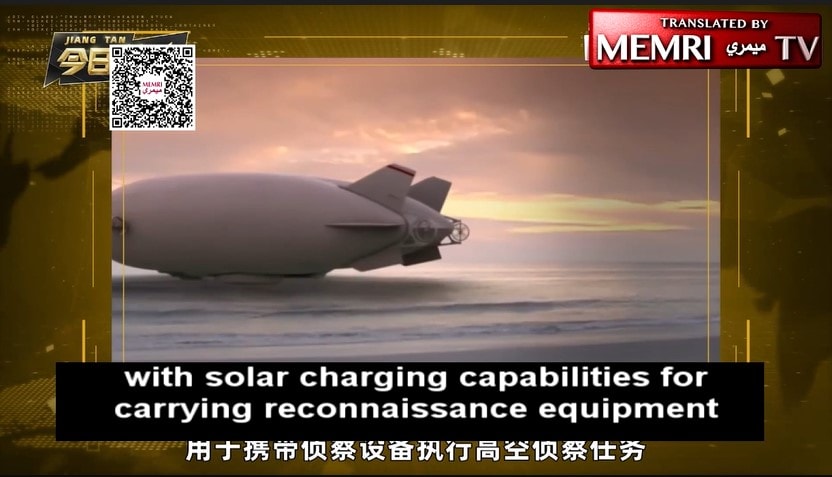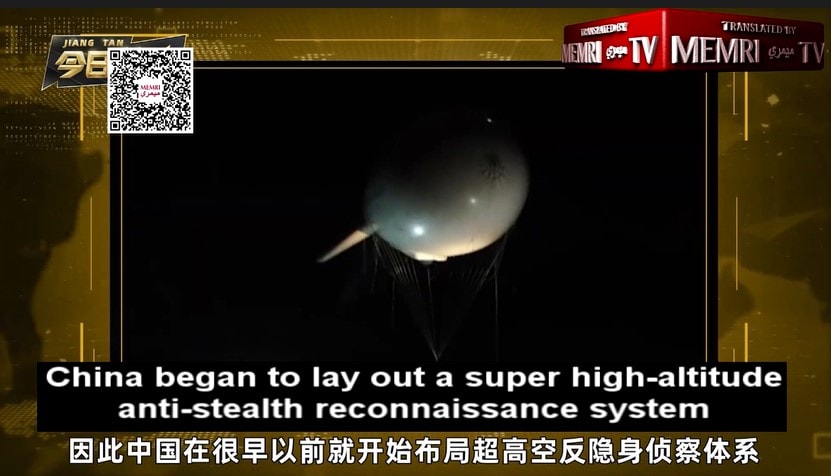
On December 22, 2022, a video was posted to the Chinese Haokan video platform in which an unnamed Chinese academic presented as an associate professor of transportation engineering and a special researcher at Huaqiao University said that China has been developing high-altitude blimp-based reconnaissance and surveillance systems for "a long time." He said that the 30,000-meter flight ceiling of unmanned reconnaissance airships protects them from modern air defense systems, that they can serve as a highly effective "eye in the sky," and that they can be particularly useful in detecting stealth aircraft, which are most easily detected from above. He also said that China deployed its first "near-space" airship, the Yuan Meng as early as 2015, and that China's airship technology is no less sophisticated than that of the U.S. In addition, he said that China's fleet of airships includes the AS-700 manned airship and the Golden Eagle unmanned airship. Moreover, he said that it is possible that Chinese intelligence blimps have served a role in helping China detect American incursions into the South China Sea, and that in 2019 U.S. satellites photographed unmanned Chinese airships in that region.
Chinese academic: "So the U.S. Air Force has been hoping to develop a high-altitude blimp with solar charging capabilities for carrying reconnaissance equipment for high-altitude reconnaissance missions. After all, with the air defense capability of most countries, they cannot deal with this 'eye in the sky' with a flight ceiling of 30,000 meters. Therefore, this type of reconnaissance airships can be used like the spy planes in the Cold War era, as if conducting reconnaissance in no-man's land.





"It is worth mentioning that according to the original concept, the U.S. military also designed and developed a large transport airship capable of transporting main battle tanks. But considering the cost and difficult of [America's] research and development, so far, the U.S. military has only developed a reconnaissance blimp, used to spy on other countries from a distance.
"At this point some viewers might ask, do we have such good equipment? The answer is not only yes, but also that our technology is not inferior to that of the United States. As early as 2015, we flew the first Chinese near-space airship, the Yuan Meng. So far, we also have a variety of airships such as the AS700 manned airship and the Golden Eagle unmanned airship.





"More importantly, because high-altitude airships have an altitude advantage over conventional aircraft, and because stealth places are most easily detected from above, China began to lay out a super high-altitude anti-stealth reconnaissance system a long time ago. The main equipment of this system, in addition to the various types of anti-stealth UAV's, is the high-altitude airships equipped with anti-stealth pods.




"It can be said that in the field of high-altitude airships, China is already the leader together with the United States, and the related technology has long been applied to places we do not know. For example, in 2019, U.S. satellites photographed unmanned Chinese airships parked on the ground in the South China Sea region.



"On this basis, at the very least, we need to understand one thing: relying solely on land reclamation is not enough to build a complete intelligence gathering and control system in the South China Sea. Considering that every time the U.S. military enters the South China Sea we catch them red-handed, who can guarantee that China's high-altitude airships have not made contribution in these areas? Right? Well, that's it for this episode, thank you for watching."

















